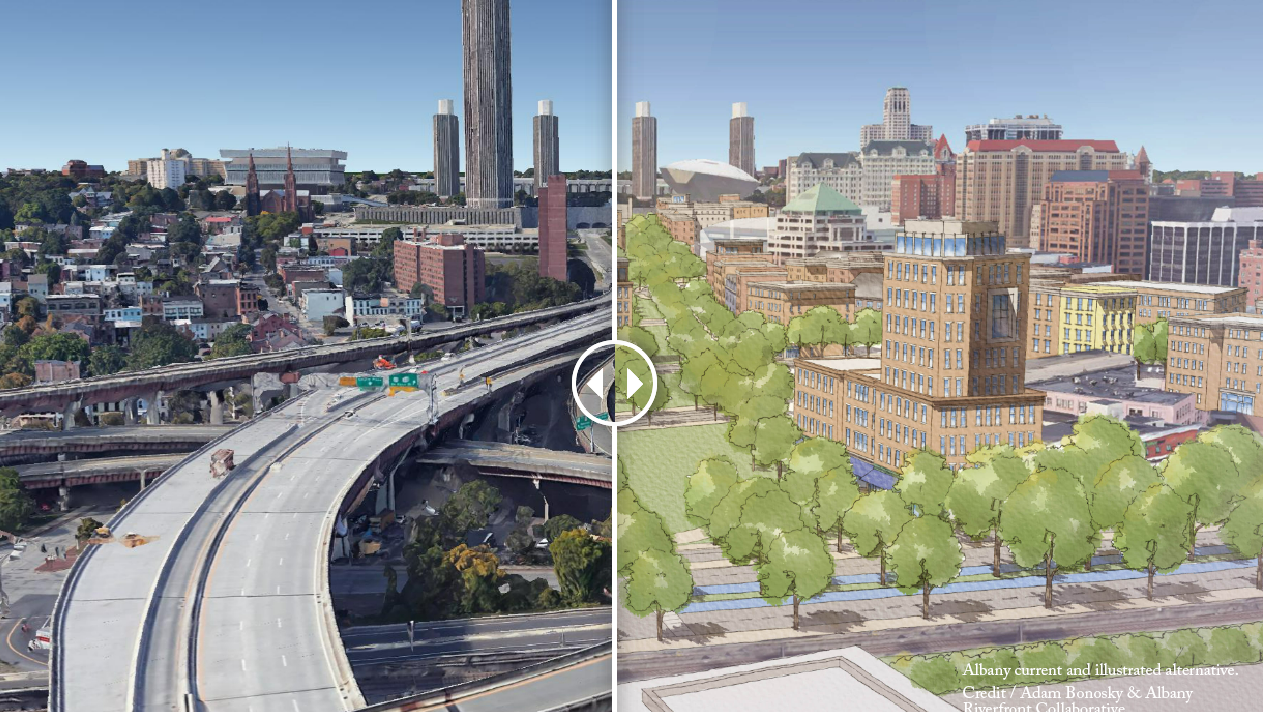History and Context
Constructed during the urban renewal efforts in the 1960’s, Interstate 787 was part of the larger Empire State Plaza project which demolished 98 acres of thriving neighborhoods, homes, and businesses in the City of Albany, creating a state office complex with a highway to easily take people in and out of the city. In addition to losing thousands of homes and businesses to the overall project, Interstate 787 architecturally cut off Albany from the riverfront and even more dramatically segregated the redlined neighborhoods of the South End and Arbor Hill, exacerbating the lack of investment and resources that redlining created for the mostly people of color that lived in these neighborhoods.
Proposal
Albany Riverfront Collaborative was created as a grassroots organization to conceive of a city without I-787 while centering the needs of the current communities as the process moves forward. Since the first formal meeting in early 2021, the ARC has created conceptual designs and renderings, produced an internationally award-winning video, completed an economic impact analysis and in 2022, was instrumental in receiving a $5 million formal commitment for funding for the NYSDOT to conduct a feasibility study with DOT issuing the associated RFP in August 2022.
Removal of Interstate 787 would help to heal the divisions created when this road tore apart the core of Albany. Removal would reduce noise and air pollution with slowed and reduced traffic, reconnect the historically underinvested North and South End neighborhoods, and improve economic vitality. Even more, calls for I-787’s removal overlap with the cleanup and restoration of the Hudson River which more people are utilizing through boating and kayaking and on the shore through walking, bike riding, and fishing. Connecting the heart of the city with the riverfront will drive many different kinds of economic activities, and support transitions to multi-modal movement into and throughout the city. Albany is also the capital of New York State and the highway is currently creating actual barriers to access for the heart of the Capital and the many people that go there. Highway removal would allow easier access to the Capitol and other state buildings that can give residents better access to jobs and places of business while allowing businesses the opportunity to take advantage of the economic driver that comes from being the NYS Capital.
Current Plans
The New York State Department of Transportation (NYSDOT) is undertaking a Planning and Environmental Linkage (PEL) study to reimagine the Interstate 787 Corridor and its proximity to the Hudson River. The study will expand on the previously completed I-787 Hudson Waterfront Study completed in 2018 by the Capital Region Transportation Council (Transportation Council). NYSDOT is commencing this study to build on the prior recommendations to identify potential future transportation strategies that support and balance economic development and revitalization efforts, including enhanced walking, biking, and public transportation access to the waterfront.



















